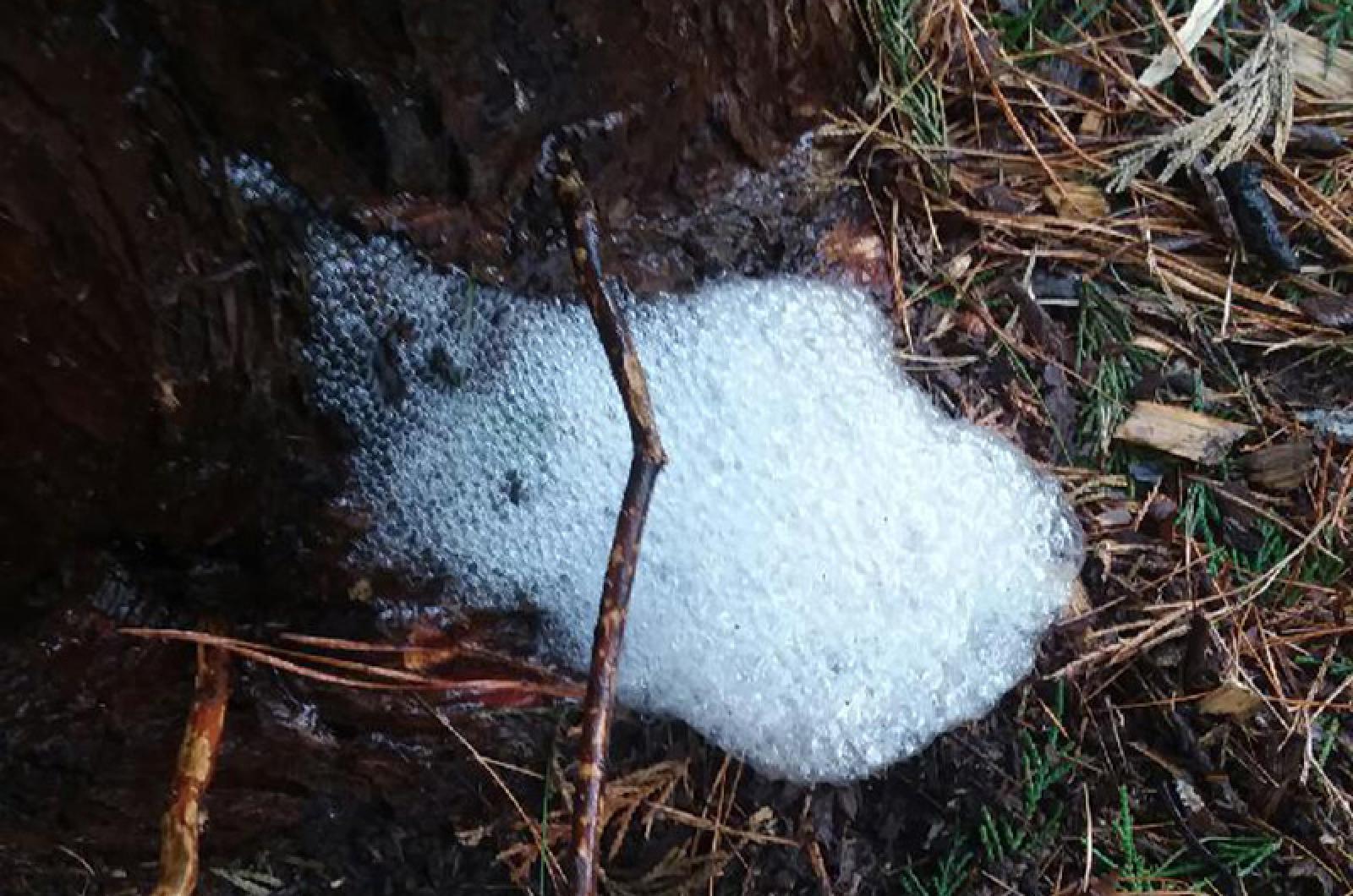There is something bubbling up in Katama.
Dave Nash and Robin Bray of Edgartown reached out last week to ask about a flock of froth on the base of a few trees. Photos were exchanged and, indeed, there was some sudsy stuff on the lower part of a pitch pine tree and a Leland cypress.
We volleyed a few questions and answers back and forth — how big is the mass of foam, does it smell, does it have any color, is it sticky, can you see anything beneath or inside of the bubble mass? Each question was answered, yet no clarity for the cluster came immediately.
A first guess would have been insect-created spittle foam, however, the time of the year (winter), size of the mass, and lack of hidden creature precluded that idea. Chemicals, including pesticides or other tree treatments could be causal, though that was also ruled out since nothing artificial was applied to the trees.
Google yielded a few options. Slime flux, also known as foamy canker, alcohol flux and wet wood, is a condition caused by a bacterium in the tree that pushes the sap out of the tree to bleed from the bark and can create staining, dripping and oozing of the fluid to the exterior of the tree. The sap can ferment and bubble, causing foam that may have a sweet odor and can attract insects.
While interesting, this didn’t seem to fit with Dave and Robin’s description. A more elementary cause was at play in this case.
When it rains, it foams. That was the simple answer to the bafflement of bubbles.
The sap of pine trees contains soap-like constituents. Heavy rains, like we have had recently, interact with the sap and particulates on the tree bark and create soapy foam that will drip down the trunk and gather at the base of the tree. This phenomenon can also happen in other tree species, especially after a period of drought. The buildup of salts, acids and proteins found naturally, and from pollutants in the air, mix with plant materials to cause the bubbly broth.
This situation can also be observed on paved roads when rain mixes with particles on the road and is stirred up by the motion of tires. Foam can develop and shed to the side or edges of the road. It is a similar process that produces foam on the shorelines of the ocean, ponds or rivers, which is caused by both natural and human-made factors.
Songster Barry Gibb noted: “All bubbles have a way of bursting or being deflated in the end,” and that is exactly what happened in the case of the Katama froth. Though the foam quickly disappeared, Australian poet Adam Lindsay Gordon’s words stay with us: “Life is mostly froth and bubble, Two things stand like stone. Kindness in another’s trouble, Courage in your own.”
Suzan Bellincampi is director of the Felix Neck Wildlife Sanctuary in Edgartown, and author of Martha’s Vineyard: A Field Guide to Island Nature and The Nature of Martha’s Vineyard.




Comments (2)
Comments
Comment policy »